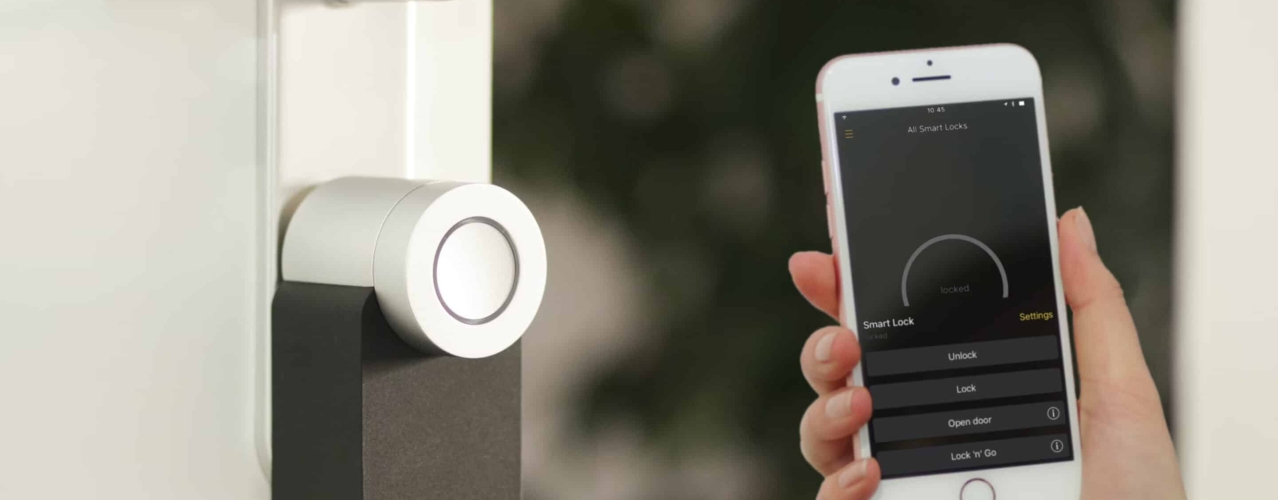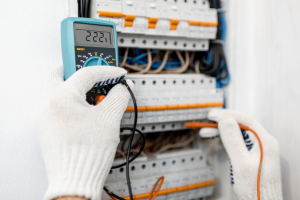


Trends I published 15 December 2023
Smart home
The market for smart home products and installations is young, vibrant, and very broad. So much so that it can be rather hard to define. It ranges from high-end, custom-made home automation systems that control many applications for heating, lighting, security, and entertainment from an integrated central app to small off-the-shelf solutions like a single light bulb controlled through an app on your phone.
This interesting market is still in its infancy, which means there are great opportunities for manufacturers and brands that aim to produce innovative smart home products. At the same time, this young and rapidly developing market can be rather volatile and pose many challenges. Its playing field is constantly changing, for instance. The constant stream of new developments and innovations and the many new and unknown players can make it hard to stay ahead of the game.
Challenges that USP can help you overcome
We have conducted many studies to help a diversity of clients succeed in the smart home market, which can roughly be segmented into heating, lighting, security, and entertainment.
Questions they were struggling with included:
- Who decides on smart home solutions, and who influences them?
- Who are your competitors, and how can you stay ahead of them?
- How are prices influenced by large online players in this market?
- What trends influence this market, and what opportunities do they create?
Trends and influences in the smart home market
In its earliest form, this market consisted of a high-end segment of home automation systems for wealthy early adaptors, resulting in an image of being expensive and high-end. That is not the case any more, and smart home products and systems are now available in broader price ranges for a more general public. Availability to a broad public does not automatically mean broad adoption, though. The rise of smart homes has not been the revolution smart devices are often hyped to be, at least not in every segment.
The quest for sustainability and a healthy climate is a good example of larger trends influencing the smart home market. This call was answered by a vast array of smart home devices that help save energy either directly, for instance, a smart thermostat, or indirectly, like a system to automatically open or close curtains and windows to create a healthy indoor climate and replace an energy-consuming air conditioner.
Like sustainability, major trends like labour shortages or the ageing population have an influence. Installers need time to get familiar with new smart home systems. Time is often absent because schedules are full due to labour shortages. Meanwhile, since smart products are generally more easily adopted by younger generations, an ageing population of both installers and consumers makes it harder to convince them that smart home systems are worth the investment.
Read our new blog for a deeper dive into specific smart home trends expected to take hold in 2024.
How can USP help in the smart home market?
Research that USP often conducts related to smart homes is:
Context is key
To create an overview of market developments and provide context for client-specific research, USP Marketing Consultancy has developed several monitors. We continuously research market developments and the effects of key trends like labour shortages among architects, contractors, HVAC installers, electrical installers, painters, and end-consumers, of which reports are published quarterly, semi-annually, or annually.

Read more about the subject

Fresh Insights Await
Our latest reports
Delve into the newest findings across various market segments, crafted for a cutting-edge overview. Explore our latest reports, brimming with up-to-date data, trend analyses, and in-depth examinations, all tailored to provide you with a comprehensive understanding of the current market dynamics.
Construction
Home Improvement
Installation
Construction
Trends in material usage Q1 2024
2024 102 pages
Explore the evolving trends in material usage among European architects in Q1 2024. Delve into the factors driving material preferences and the impact on construction aesthetics and sustainability.
1,850 Euro
Construction
Media orientation H2 2021
2024 161 pages
Explore the media engagement patterns of contractors to optimize your marketing strategies. Dive into a pool of insights that unveils how contractors interact with different media channels.
6,300 Euro
Construction
European Green Deal Q4 2021
2024 88 pages
Explore the impact and reception of the European Green Deal among architects. Understand how the initiative is influencing architectural practices and sustainability measures.
1,850 Euro
Construction
BIM Q4 2023
2024 246 pages
Key insights regarding the BIM usage and behaviour of European architects, and our latest future building volumes prognoses
1,850 Euro
Construction
Purchase Channels H2 2023
2024 123
Explore the buying and ordering behaviour among contractors in H1 2023. Uncover the key channels used, share-of-wallet and much more.
6,300 Euro
Construction
Behavioural segmentation and media usage report 2023
2023 75 pages
This report provides a comprehensive overview of purchase behaviour, products, and media usage, specifically focusing on European handymen. It delves into how handymen use media, and for what purposes, and examines their habits and preferences in terms of purchasing behaviour.
8,400 Euro
Home Improvement
DIY versus DIFM Q4 2021
2024 113 pages
This report is a must-have if you’re in the home improvement industry. It provides a wealth of information on the behaviour of DIY and DIFM consumers, their motivations, and the factors that influence their purchasing decisions.
3,150 Euro
Home Improvement
DIY or DIFM Q4 2023
2024 70
Explore the prevailing trends between DIY and DIFM in Q4 2023. Understand consumer preferences and the factors influencing their choice between DIY and DIFM.
3,150 Euro
Home Improvement
Branding Q3 2023
2023 93 pages
This report offers an extensive overview of the home improvement industry, with a focus on branding and the most popular brands within different categories. Within this report, you will gain insights into how customers perceive home improvement brands and what motivates them to buy certain products.
3,150 Euro
Home Improvement
Purchase channels Q2 2023
2023 114 pages
The European Home Improvement Monitor offers valuable insights on purchase channels in the European home improvement industry, examining the evolving preferences and behaviors of consumers across traditional retail and emerging online platforms.
3,150 Euros
Home Improvement
Purchase Channels Q2 2022
2022 124 pages
Uncover the prevalent purchase channels in the home improvement sector during Q2 2022. Delve into consumer preferences and the factors influencing their purchasing decisions.
3,150 Euro
Home Improvement
Do-it-yourself or do-it-for-me Q4 2022
2022 93 pages
Explore the prevailing trends between DIY and DIFM in Q4 2022. Understand consumer preferences and the factors influencing their choice between DIY and DIFM.
3,150 Euro
Installation
Smart & Connected Products Q2 2024
2024 120 pages
This report provides a comprehensive view of the attitudes of installers toward smart building solutions, specifically among electrical installers and their clients. In the report, you will find insights into the installers' experiences with installing smart products and the willingness of end users to invest in such solutions, as well as their motivations and pain points.
3,150 Euro
Installation
Sustainability Q1 2024
2024 81 pages
Delve into sustainability trends in the home improvement sector in Q1 2024. Discover consumer preferences and the shift towards eco-friendly home improvement solutions.
3,150 Euro
Installation
BIM Q1 2024
2024 84 pages
The European Mechanical Installation Monitor report provides a detailed analysis of the plumbing and HVAC industry. This report specifically focuses on BIM adaptation in the industry.
2,650 Euro
Installation
Sustainability Q1 2024
2024 99 pages
The European Electrical Installation Monitor report provides a detailed analysis of the sustainable solutions in the installation industry. This report specifically focuses on sustainability aspects in the industry.
3,150 Euro
Installation
Challenges toward sustainable future Q4 2021
2024 111 pages
2,650 Euro
Installation
Purchase channels Q4 2021
2024 106 pages
Delve into the training needs within the electrical installation sector. Understand the areas requiring skill development to meet the evolving demands of the industry.
3,150 Euro












